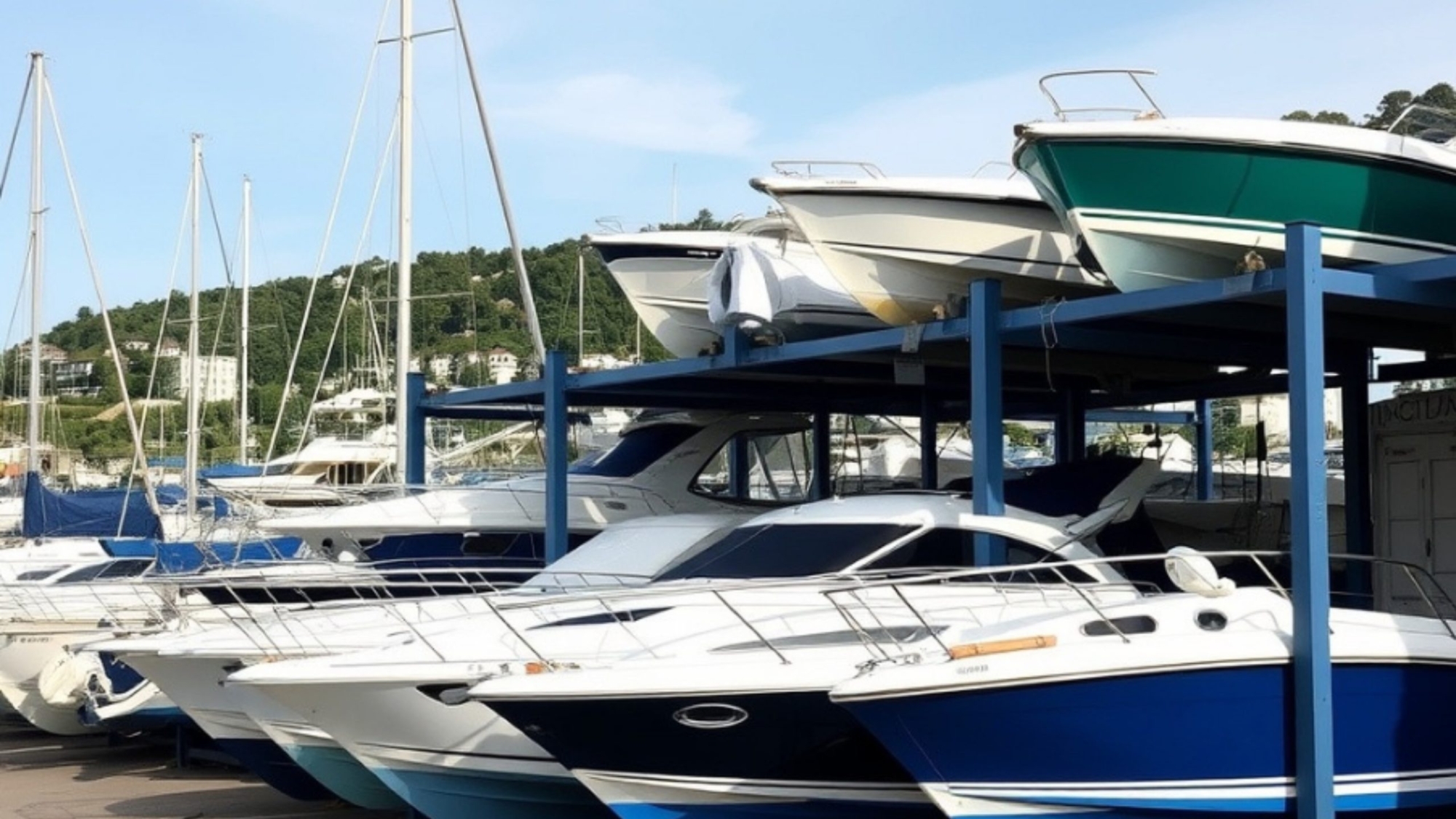As the boating season on the French Riviera comes to a close, preparing your boat for winter storage is essential to ensure it remains in optimal condition. Winterizing your boat not only extends its lifespan but also makes your next boating season hassle-free. Here’s a comprehensive checklist to help you get your boat ready for winter storage.
1. Engine Maintenance: Prevent Winter Wear
The heart of your vessel, the engine, requires special attention to withstand the cold season and prevent damage during downtime.
- Flush the Engine: Flush the engine thoroughly with fresh water to remove salt and other residues, preventing corrosion during storage.
- Fuel Stabilizer: Add a fuel stabilizer to your gas tank to keep the fuel from degrading and clogging the engine. Run the engine briefly after adding it to ensure the stabilizer reaches the fuel lines.
- Change the Oil and Filters: Fresh oil reduces the risk of engine corrosion. Change the oil and replace filters as part of winterizing to keep the engine’s internals in top shape.
- Fogging the Engine: Spray fogging oil into the engine’s carburetor or cylinders to provide an extra layer of protection against rust.
2. Protecting the Hull: A Barrier Against the Elements
Winter can be harsh on your boat’s exterior. Protecting the hull now prevents time-consuming and costly repairs in the future.
- Clean the Hull: Scrub the hull thoroughly to remove any algae, barnacles, or salt deposits. A clean surface reduces the risk of long-term damage from contaminants.
- Inspect for Damage: Check the hull for cracks, blisters, or other signs of wear. Addressing these issues before storage ensures a smooth start next season.
- Apply Anti-Fouling Paint: If you’re storing your boat in water, a fresh coat of anti-fouling paint prevents marine growth on the hull.
- Wax the Exterior: Applying a protective wax layer shields the hull from moisture and keeps it looking pristine when you take it out of storage.
3. Battery Care: Avoid a Costly Surprise
Boat batteries are prone to draining if left unattended during the winter. Proper care ensures they’ll be ready to power your vessel when spring arrives.
- Disconnect and Remove: Disconnect the batteries from your boat and store them in a cool, dry place. Leaving them connected can lead to power drain and damage.
- Trickle Charge: Hook the batteries up to a trickle charger to keep them at full capacity. This prevents freezing and extends battery life.
- Inspect Terminals and Connections: Clean any corrosion from battery terminals and ensure they’re dry before storage.
4. Interior and Upholstery Care: Keep Mold and Odors at Bay
Humidity can wreak havoc on a boat’s interior, leading to unpleasant smells, mold, and damage to upholstery.
- Deep Clean the Interior: Clean all surfaces, vacuum the floors, and remove any perishable items to discourage pests and reduce the chance of mildew.
- Ventilation: Leave compartments and storage areas open to promote airflow. A small dehumidifier or moisture-absorbing packets can help prevent mold.
- Protect Upholstery: Use mildew-resistant covers on upholstery or remove cushions and fabric items entirely for separate storage in a dry area.
5. Cover Storage Solutions: Shield Your Boat from the Elements
Investing in proper cover storage protects your boat’s exterior and interior from the elements during the winter months.
- Use a Heavy-Duty Cover: A custom-fit, high-quality cover keeps your boat safe from rain, wind, and UV damage.
- Consider Shrink-Wrapping: For long-term, weather-resistant storage, shrink-wrapping is an effective option. It offers a tight, durable seal and provides UV protection.
- Secure the Cover: Make sure the cover is tightly secured to prevent it from flapping or tearing in strong winds.
6. Additional Tips for On-Land Storage
If you’re storing your boat on land, there are a few additional steps to ensure its safety during the off-season.
- Drain Water Systems: Drain the water from plumbing, holding tanks, and any other onboard systems to prevent freezing and cracking.
- Raise the Boat on Blocks: Elevating your boat on blocks or a trailer relieves pressure on the hull and prevents it from sitting in potential water pools.
- Cover or Remove Electronics: Electronics are susceptible to moisture damage. Cover them securely or remove any valuable gadgets entirely to store indoors.
7. Document and Plan for Recommissioning
Taking some time now to document what you’ve done can save time and hassle when you’re ready to get back on the water.
- Create a Checklist: Make a list of all maintenance and winterization steps performed, along with any repairs needed in spring.
- Store Manuals and Documentation: Keep all boat manuals, maintenance logs, and receipts in a safe place. This will make next season’s preparations easier and ensure warranty coverage for recent repairs.
- Inspect Boat Insurance and Registration: Check that your insurance and registration will remain valid during storage. If necessary, renew them so you’re ready to go when spring returns.
Conclusion
Winterizing your boat may seem like a lot of work, but it’s an investment in your vessel’s longevity and performance. By taking these steps, you’ll not only protect your boat from the harsh winter conditions but also make your spring launch much smoother. At Oceanfy Marine, we’re here to help you with every step of the winterization process, from engine maintenance to hull protection. Contact us to learn how we can make winter storage preparation stress-free, so you can enjoy a seamless start to the next boating season.


Leave Your Comment